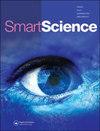盐酸度洛西汀肠溶微丸缓释胶囊:处方与评价
IF 1.4
Q2 MULTIDISCIPLINARY SCIENCES
引用次数: 2
摘要
摘要本研究的主要目的是开发和评价一种有效可靠的盐酸度洛西汀肠溶微丸缓释胶囊剂型。盐酸度洛西汀在酸性环境中溶解,但由于流化床处理器的Wurster膨胀过程,颗粒保持其肠溶包衣。四个不同的层包括肠溶包衣颗粒:药物层、屏障层、肠溶层和惰性核心颗粒上的涂层。悬浮分层方法通过在酸性环境中涂覆由羟丙基甲基纤维素邻苯二甲酸酯HP55组成的肠溶层来保护酸性环境免受药物的影响。我们还确定了所有配方的堆积密度和振实密度、豪斯纳比、压缩指数和水分含量。正在使用紫外-可见光谱法对生产的颗粒进行体外释放测试评估。使用零阶模型、一阶模型和Higuchi的平方根方程、Hixson Crowell、Korsemeyer-peppas和Weibull模型来评估释放的动力学模型。使用FT-IR(红外光谱)的研究仍在进行中,以确定该药物与各种赋形剂的兼容性。配方‘F7’的相似系数最高,为56.1。在加速设置下进行了三个月的稳定性测试,确定优化配方是稳定的。图形摘要本文章由计算机程序翻译,如有差异,请以英文原文为准。
Duloxetine hydrochloride enteric-coated pellets in capsules with delayed release: formulation and evaluation
ABSTRACT The primary purpose of this study is to develop and evaluate an effective and reliable delayed-release dosage form of Duloxetine hydrochloride enteric-coated pellets in capsules. Duloxetine hydrochloride dissolves in an acidic environment, yet pellets maintain their enteric coating due to the Wurster expansion process for the Fluidized Bed Processor. Four distinct layers comprise enteric-coated pellets: a pharmaceutical layer, a barrier layer, an enteric layer, and a coating on the inert core pellets. A suspension layering approach protects the acidic environment from the drug by coating it with an enteric layer composed of hydroxyl propyl methyl cellulose phthalate HP55. We also determined the bulk and tapped densities, Hausner’s ratio, compressibility index, and moisture content of all formulations. The produced pellets are being evaluated for in-vitro release tests using UV-Visible spectroscopy. The zero-order model, the first-order model, and Higuchi’s square root equation, Hixson-Crowell, Korsemeyer peppas, and the Weibull model were used to evaluate the released kinetics models. Investigations using FT-IR (infrared spectroscopy) are still being undertaken to determine the drug’s compatibility with various excipients. Formulation ‘F7’ exhibited highest similarity factor of 56.1. Stability tests conducted over a three-month period under accelerated settings established that the optimized formulation is stable. GRAPHICAL ABSTRACT
求助全文
通过发布文献求助,成功后即可免费获取论文全文。
去求助
来源期刊

Smart Science
Engineering-Engineering (all)
CiteScore
4.70
自引率
4.30%
发文量
21
期刊介绍:
Smart Science (ISSN 2308-0477) is an international, peer-reviewed journal that publishes significant original scientific researches, and reviews and analyses of current research and science policy. We welcome submissions of high quality papers from all fields of science and from any source. Articles of an interdisciplinary nature are particularly welcomed. Smart Science aims to be among the top multidisciplinary journals covering a broad spectrum of smart topics in the fields of materials science, chemistry, physics, engineering, medicine, and biology. Smart Science is currently focusing on the topics of Smart Manufacturing (CPS, IoT and AI) for Industry 4.0, Smart Energy and Smart Chemistry and Materials. Other specific research areas covered by the journal include, but are not limited to: 1. Smart Science in the Future 2. Smart Manufacturing: -Cyber-Physical System (CPS) -Internet of Things (IoT) and Internet of Brain (IoB) -Artificial Intelligence -Smart Computing -Smart Design/Machine -Smart Sensing -Smart Information and Networks 3. Smart Energy and Thermal/Fluidic Science 4. Smart Chemistry and Materials
 求助内容:
求助内容: 应助结果提醒方式:
应助结果提醒方式:


